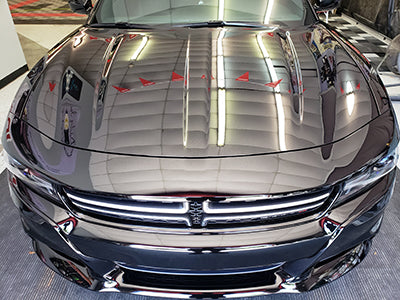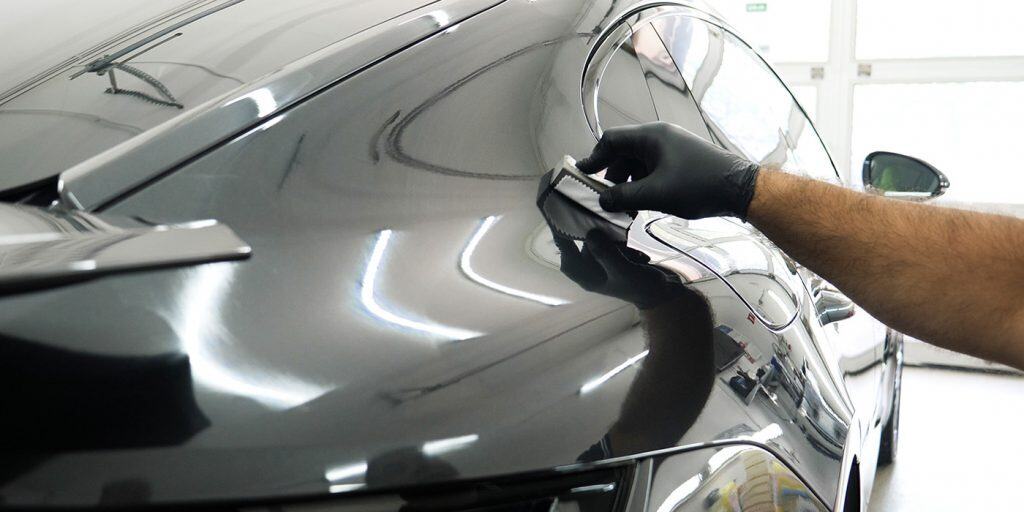Ceramic Covering vs. Traditional Wax: Which Gives Much Better Long-Term Defense?
The discussion in between ceramic finishings and conventional wax for lorry defense has garnered considerable interest amongst vehicle lovers and professionals alike. Ceramic finishings boast superior long life and resistance to environmental variables, yet the complexity of their application elevates inquiries about accessibility and usefulness.
Summary of Ceramic Coating
Ceramic layer has obtained considerable appeal among vehicle enthusiasts and detailers alike as a result of its sophisticated safety high qualities. This cutting-edge technology is made to create a long lasting, hydrophobic guard over an automobile's paint surface, substantially enhancing its resistance to environmental impurities such as dirt, UV rays, and chemical spots. Unlike typical wax, which offers a short-lived layer of defense, ceramic coatings bond at a molecular level with the paint, supplying long-lasting toughness-- often prolonging past two years with correct upkeep.
The application procedure involves precise preparation of the automobile's surface area, consisting of cleansing and polishing to guarantee ideal bond. As soon as used, the coating cures to form a robust layer that not only adds depth and gloss to the paint however likewise simplifies maintenance. With its hydrophobic properties, ceramic covering allows water and dirt to slide off more easily, decreasing the frequency of washes and reducing the risk of swirl marks.
Furthermore, ceramic finishes are offered in different formulas, enabling users to select products customized to their certain demands and choices. On the whole, ceramic layer stands for a substantial innovation in paint security innovation, delivering exceptional performance contrasted to traditional choices.
Overview of Traditional Wax
Commonly considered a staple in automobile care, wax acts as a prominent choice for those looking for a simple method to boost and safeguard their vehicle's paint - ceramic coating. Automotive wax commonly comprises all-natural active ingredients, such as carnauba, or synthetic substances, created to produce a safety layer on the surface area of the paint. This layer not only boosts the car's gloss and beam but likewise provides an obstacle against ecological contaminants
The application of wax is usually easy to use, making it obtainable for both professionals and DIY fanatics. As soon as applied, wax needs a healing duration, after which it hardens to develop a safety covering.
However, while wax works for enhancing the visual appeal of an automobile, it is essential to note that the security it uses might demand more regular reapplication contrasted to different products, such as ceramic finishes. On the whole, conventional wax stays a preferred alternative for those focusing on convenience of usage and prompt aesthetic renovation.
Resilience and Durability Comparison
While both ceramic finishings and standard wax deal safety benefits for vehicle paint, their toughness and long life vary dramatically. Typical wax, commonly made from all-natural carnauba or artificial polymers, usually gives a safety layer that lasts around three to six months. This fairly short lifespan necessitates normal reapplication to keep optimum protection.
On the other hand, ceramic coatings are crafted from innovative nanotechnology, creating a covalent bond with the paint surface area. This leads to a robust, hydrophobic layer that can sustain for 2 to five years, depending on the item and environmental conditions. The superior durability of ceramic layers is connected to their chemical framework, which provides enhanced resistance to scrapes, UV rays, and oxidation.

Security Versus Environmental Variables
Safeguarding a vehicle's paint from environmental variables is important for maintaining its look and value with time. Cars are constantly subjected to a selection of aspects, consisting of UV rays, bird droppings, tree sap, acid rainfall, and road gunk, every one of which can compromise the stability of the paintwork.
Ceramic coatings supply a robust defense versus these environmental assailants. Unlike traditional wax, which can degrade rapidly under UV direct exposure, ceramic coatings form a long lasting, hydrophobic layer that stands up to the harmful impacts of sunlight and toxic wastes. This advanced innovation develops a chemical bond with the vehicle's surface, providing remarkable security that lasts for several years, also in harsh conditions.
Conventional wax, while simpler to apply, normally calls for constant reapplication and supplies minimal resistance to impurities and you could check here UV rays. Over time, it can break down, leaving the paint vulnerable to scratches and oxidation. On the other hand, ceramic coatings maintain their safety qualities much longer, significantly reducing the risk of paint damages and ensuring that the vehicle retains its visual appeal. Therefore, ceramic coverings are progressively recognized as the superior selection for lasting security against environmental variables.
Application and Upkeep Differences
The approaches of application and subsequent upkeep for ceramic coverings and traditional wax differ dramatically, impacting the total individual experience and performance of each product. Ceramic finishes require an even more elaborate application procedure, typically including surface area preparation that includes cleaning, sanitizing, and polishing the car. As soon as the surface area is ready, the ceramic finish is used in a controlled atmosphere, commonly requiring professional know-how to ensure proper treating and bonding to the paint.

While both items boost vehicle appearance, the longer-lasting protection provided by ceramic coatings might warrant their preliminary financial investment, regardless of the even more requiring application procedure. Alternatively, typical wax continues to be a preferred choice for those seeking a less complex, albeit short-term, service.

Verdict
To conclude, ceramic coverings demonstrate significant advantages over traditional wax in terms of resilience and environmental protection. With a lifespan expanding 2 to 5 years and remarkable resistance to UV rays, dirt, and chemical stains, ceramic coverings provide a more effective remedy for lasting automobile maintenance. The application process might need professional expertise, the resulting price savings and reduced regularity of reapplication highlight the worth of ceramic finishes for those seeking optimum automobile protection.
The discussion in between ceramic coverings and typical wax for automobile protection has actually gathered substantial interest amongst vehicle enthusiasts and experts alike. Unlike conventional wax, which gives a momentary layer of security, ceramic coatings bond at a molecular degree with the paint, offering resilient resilience-- usually prolonging past two years with appropriate upkeep.
While both ceramic finishings and typical wax deal click for source safety advantages for auto paint, their toughness and durability vary dramatically. For car fanatics looking for long-lasting protection, ceramic layers offer a compelling advantage have a peek at this site over typical wax items.
In final thought, ceramic finishings demonstrate significant benefits over typical wax in terms of longevity and ecological defense.